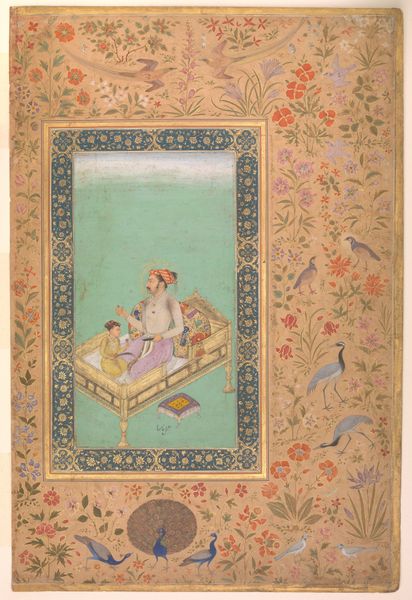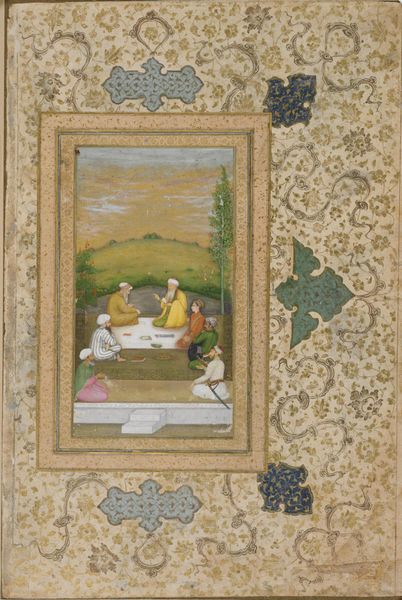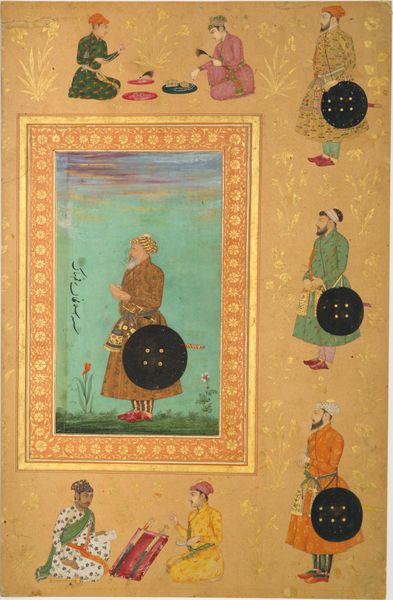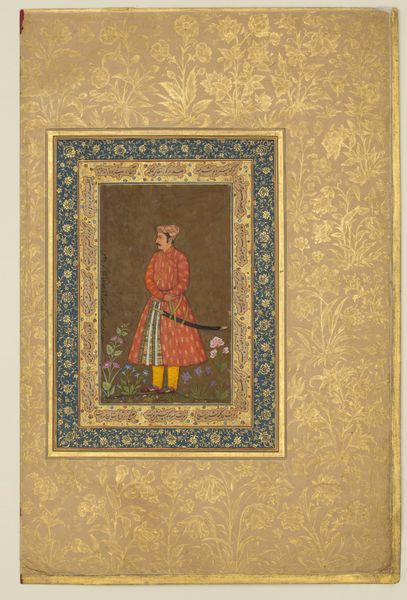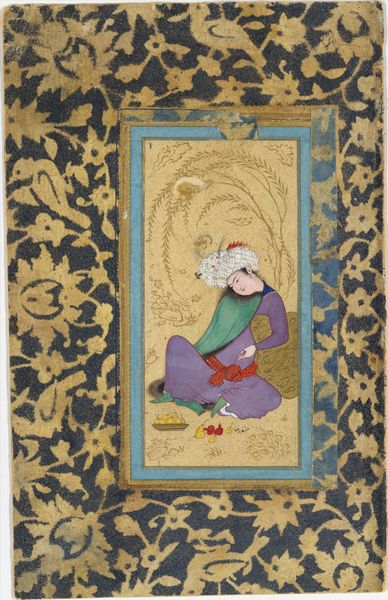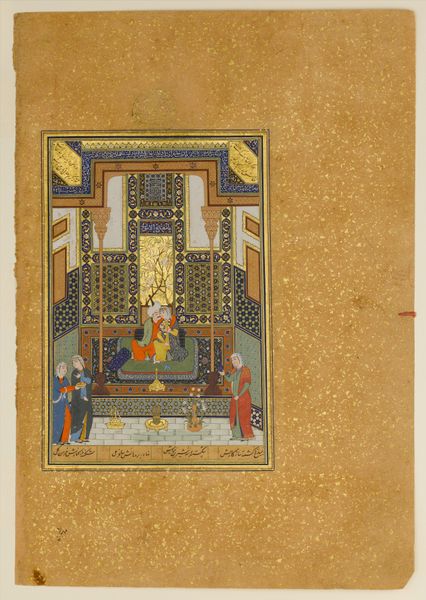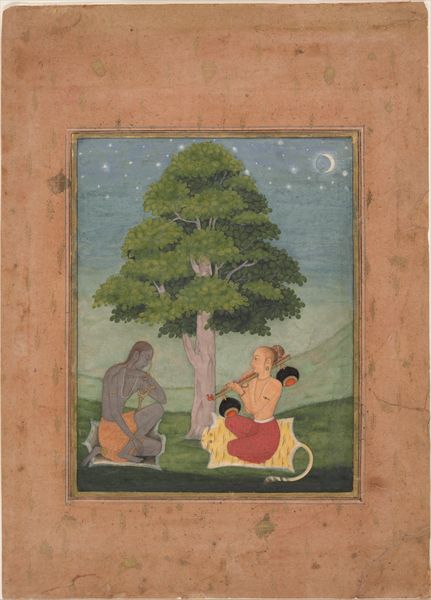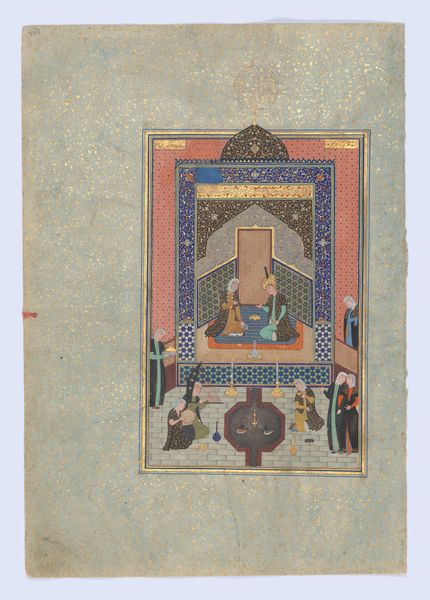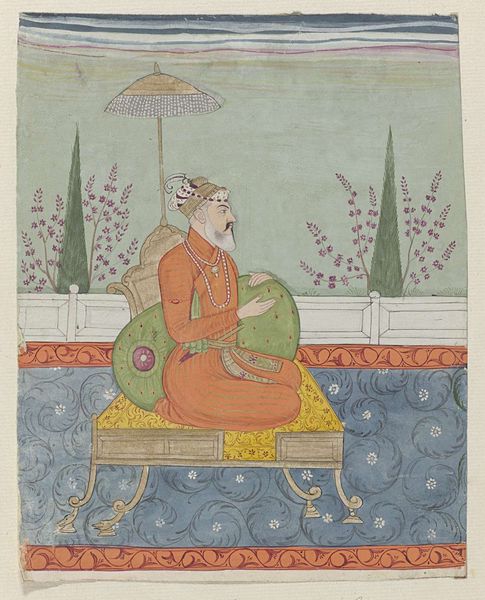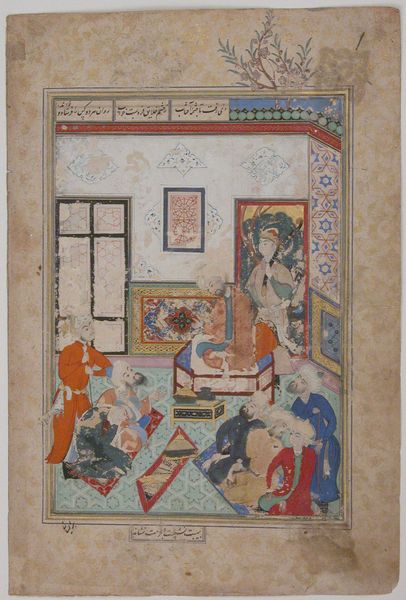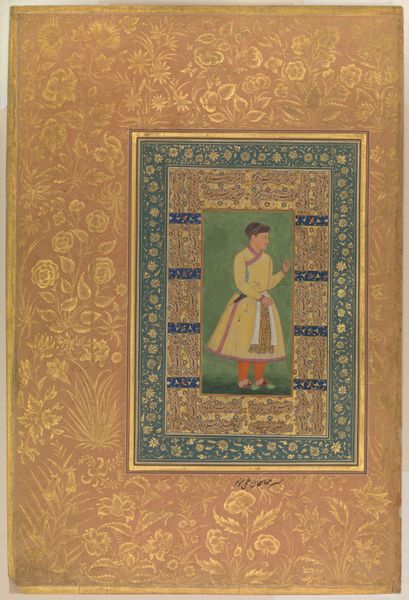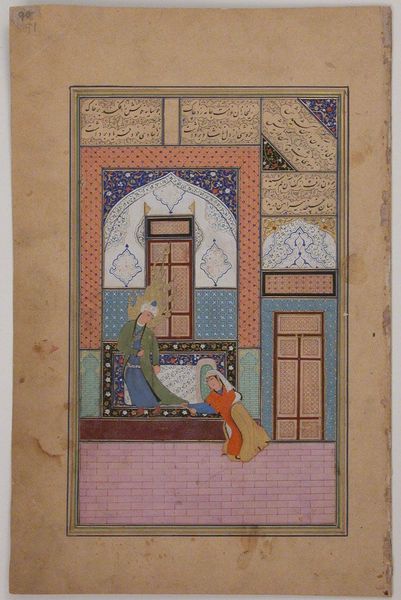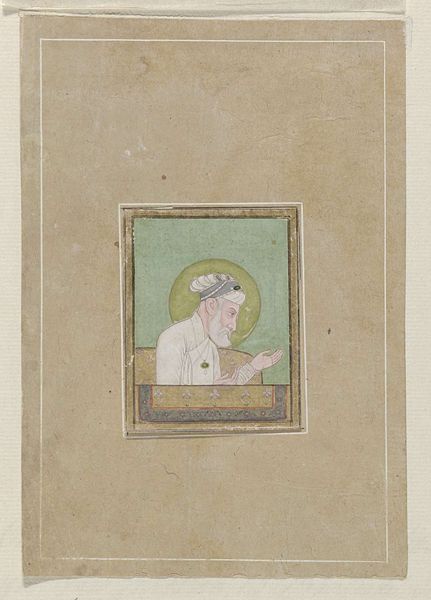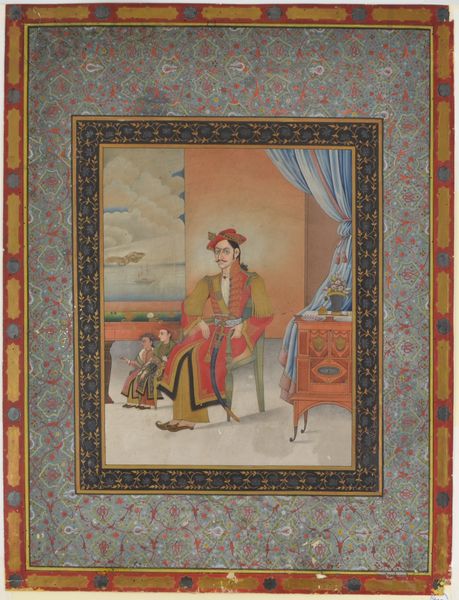
Album Page with Calligraphic Specimen First Half of the 16th century (calligraphy); 17th/18th century (borders)
0:00
0:00
painting, paper, watercolor
#
portrait
#
water colours
#
painting
#
asian-art
#
landscape
#
paper
#
watercolor
#
genre-painting
#
miniature
Dimensions: Image: 20 × 13.5 cm (7 7/8 × 5 5/16 in.); Outermost Border: 40 × 27 cm (15 3/4 × 10 5/8 in.); Paper: 42.3 × 29.2 cm (16 5/8 × 11 1/2 in.)
Copyright: Public Domain
Curator: Immediately striking! I sense a real yearning for stability, perhaps reflecting social unrest of the time. Editor: We’re looking at an album page titled “Calligraphic Specimen." Its central image, the calligraphy, dates to the first half of the 16th century, though the borders were added later in the 17th or 18th century. Curator: The borders themselves become really crucial. We’re dealing with temporal layers here, artistic reframings across centuries that really echo broader socio-political shifts in the Mughal Empire. Editor: Absolutely. Consider the materiality. It's watercolor and ink on paper, humble materials elevated to an art form through meticulous labour and the patronage of powerful individuals. Think about the production, the pigments, the tools involved in crafting such detail. Curator: The man depicted, seemingly engaged in deep contemplation with that little vial in his hand, brings up questions of gender and representation in the court, I am fascinated by the power dynamics at play, especially in whose likeness is presented for posterity and whose labor has been deemed invisible Editor: Precisely! And we must consider how the consumption of artworks like these sustained specialized craft economies. This image exists in relation to global trade, the accessibility of specific pigments and tools. Curator: This reminds me how so often we tend to think of aesthetic movements independently of one another but they’re always born of a place at a particular moment with the resources available there, as the globalized the materials become, it starts to make even more of a rich context Editor: Indeed. It’s a testament to both individual skill and larger systems of resource and power. Seeing the work, one can find that art gives insights into understanding labour and its value, as well as offering a glimpse into the networks that created an economy where even ink on paper has stories woven so finely into its fabric. Curator: Considering our own positions looking back at this, it's all so indicative of who we choose to canonize, and how legacies will live beyond us. It’s quite stunning, actually.
Comments
No comments
Be the first to comment and join the conversation on the ultimate creative platform.
